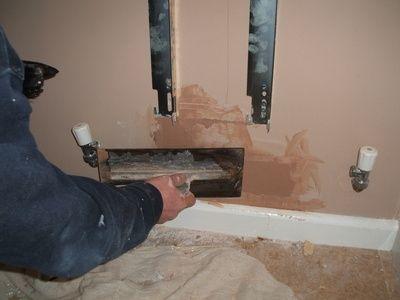Plastering
Moving to a new home is one of the most stressful experiences in life but it can also be one of the most exciting. The temptation is often to rush straight into making changes to make the house your own, but I advocate a more cautious approach: live with the house as it is for a while. You’ll watch sunlight flood some rooms and ignore others. You will discover which rooms you naturally gravitate to at certain times.
Take your time with alterations and there will certainly be less chance in the future of looking back and wishing you’d done things differently. I speak from experience here and the day arrived when I simply couldn’t put up with a misplaced light switch any longer. Chasing out the old plaster led to dust and disruption, and to a wall that needed to be made good again.

As with all restoration projects, always replace like with like. We carried out the repair using lime plaster, which is the material most often found in older houses. If you haven’t used lime plaster before, you could buy a ready mixed product rather than mix your own with sand and lime putty.
Lime plaster is ideal for older renovations; it goes off slowly so there is neither the rush nor the panic that can strike when using modern plaster, which sets much more quickly. And if it gets too firm before you’ve finished you can always spray it with a mister to make it workable again.
Damage to plastered walls, caused by either damp or general wear and tear, is not difficult to fix-nor that expensive. Professional plastering is a skilled job involving the application of a system of plasters- a Browning undercoat, or a Bonding undercoat- and a finishing coat. Plastering to new, bare brick or new build block-work requires a high level of skill to obtain a level and perfectly flat surface. Skimming a ceiling is even more of an art. But here we shall look at repairing a smallish area of a plastered wall; something that can be done without too much trouble. We’ll look at repairing both solid plaster, and plasterboard. For ease of use, when tackling smallish areas, we use a quality ready-mix plaster.
